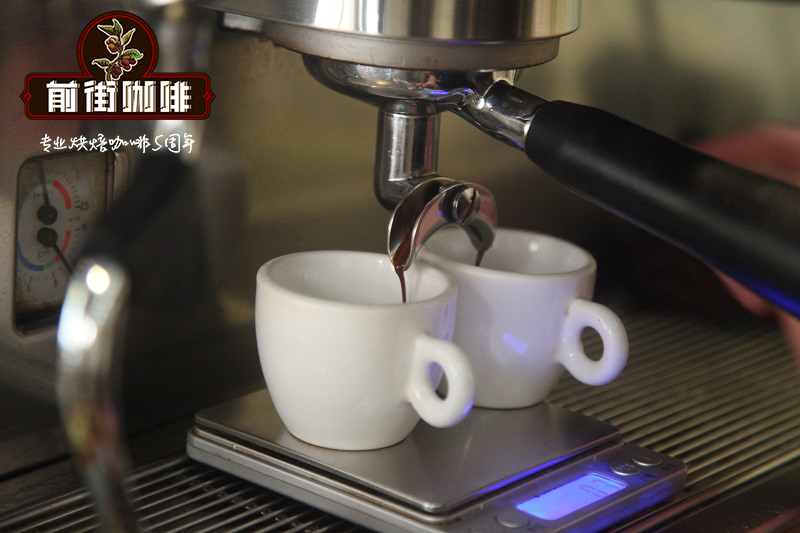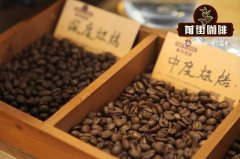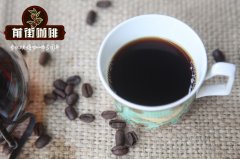What is the Sumatran wet planing method? Introduction to the characteristics of wet planing of coffee beans (Wet hulled)

Professional coffee knowledge exchange more coffee bean information please follow the coffee workshop (Wechat official account cafe_style)
Wet planing coffee beans are a tradition of Indonesian Sumatran coffee. According to the president of the Indonesian Fine Coffee Association (SCAI), Semi-washed Wet hulled, its specific operation steps are divided as follows:
The first step of ●: harvest
The harvest season for Sumatran coffee is from March to May and from September to December every year, and each farmer collects fresh coffee fruit. With the promotion of boutique coffee and the implementation of the all-red cherry program, more and more coffee farmers only harvest all-red coffee cherries.
The second step of ●: peeling and fermentation
After noon every day during the harvest season, coffee farmers send the coffee cherries collected in the morning to the peeling workshop for processing, that is, the peel and pulp of coffee cherries are removed to become wet parchment coffee.
Sumatra has a superior natural environment, and most of the water used here is mountain spring water.
Coffee farmers ferment parchment coffee, usually between 12 and 36 hours, depending on the situation. After fermentation, parchment coffee is dried. During the harvest season, every household has sacks to dry parchment coffee, which is their source of income.
The peel and pulp that are removed are fermented into fertilizer, and plantations that use such ecological fertilizers can receive additional points when applying for organic coffee plantations.
Step 3 of ●: shelling and drying
When the moisture of parchment coffee is dried to 35-40%, coffee farmers collect them in woven bags, or 40kg or 80kg each, and send them to the coffee processing plant for shelling.
The variety of certified coffee in Sumatra has increased in recent years, and usually these processing plants will have certified coffee: organic, Fair Trade, UTZ and other coffee will be processed separately, and after shelling, Greenbean will be put in a separate bag to avoid confusion of different coffee.
These wet-planed coffee beans are usually high in moisture and need to continue to dry to about 15% moisture.
Step 4 of ●: machine selection and hand selection
When coffee beans are dried to 15% 14% moisture, coffee beans are selected by machine, removed impurities and classified according to particle size. This step is usually sorted by machine, so it is called machine selection.
In order to improve the quality, the machine-selected coffee will be sent to the hand-selected warehouse for sorting, and the workers will pick out the two types of coffee with sharp vision and dexterous hands.
Some countries with high labor prices can not use a large number of manpower to select coffee, in order to ensure quality, they can only buy expensive machines and high-quality color selection equipment instead of manual quality control and quality control.
Wet planing coffee beans form the unique flavor of Sumatran coffee, although some new processing methods have been tried, but I personally prefer Sumatra to continue to use wet planing, so that the product can be more fully stable.
Qianjie coffee: Guangzhou bakery, the store is small but a variety of beans, you can find a variety of unknown beans, but also provide online store services. Https://shop104210103.taobao.com
Important Notice :
前街咖啡 FrontStreet Coffee has moved to new addredd:
FrontStreet Coffee Address: 315,Donghua East Road,GuangZhou
Tel:020 38364473
- Prev

The difference between wet planing and wet treatment. Why do Mantenin coffee beans use wet planing?
Professional coffee knowledge exchange more coffee bean information Please pay attention to the coffee workshop (Wechat official account cafe_style) is the relationship between wet planing and wet treatment seeking common ground while reserving differences? In the traditional wet treatment, fresh coffee cherries remove their pulp (Pulped) and leave them in a concrete pool to ferment overnight for acidification and pectin decomposition. Next, with parchment
- Next

What kind of raw bean treatment is the "wet planing" in Sumatra? Wet planing coffee beans drink correctly
Professional coffee knowledge exchange more coffee bean information Please follow the coffee workshop (Wechat official account cafe_style) in the world of raw coffee bean treatment, some words are already familiar, such as sun exposure, washing whether or not you have the opportunity to visit the producing areas, understanding the handling of raw coffee beans can better guide our consumer operations, such as roasting, brewing, and perception during tasting.
Related
- What is the meaning of lactic acid fermentation with coffee bean treatment?
- How to judge the state of foam by sound?
- How does the latte pull out the unicorn pattern? Come to get for a little trick to improve the flower pull!
- Will flower pulling affect the taste of the latte?
- Do you know the history of coffee?
- The difference between honey treatment and sun washing what is raisin honey treatment?
- What kind of milk can a novice use to make coffee foam to keep the foam longer? The correct method and skills of milking tutorial sharing
- Why do washed coffee beans taste sour? Flavor characteristics of washed Coffee
- Introduction to the skill of how to practice the size and height of water injection around the circle of hand-brewed coffee
- How do beginners practice coffee flower drawing from scratch?

